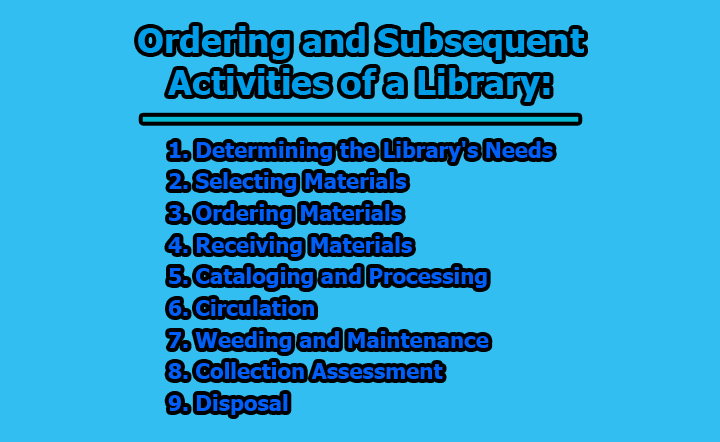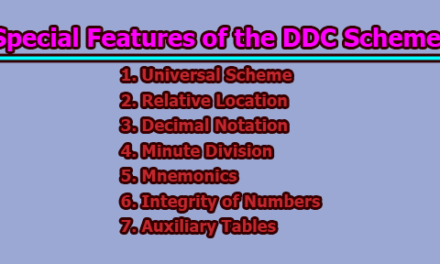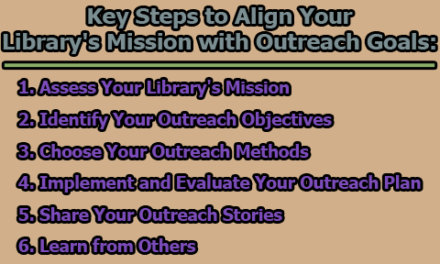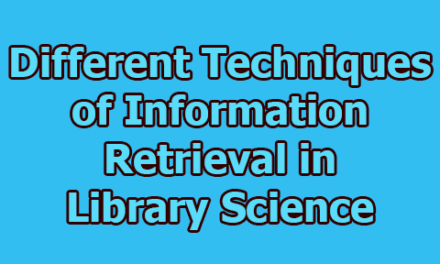Ordering and Subsequent Activities of a Library:
The ordering and subsequent activities of a library are vital processes that are central to the development and maintenance of a high-quality collection. Libraries play a crucial role in providing access to information, supporting education, and enriching communities. To fulfill these roles effectively, libraries must carefully plan, select, acquire, process, and manage their collections. In this article, we will delve into each step of the ordering and subsequent activities of a library, providing insights into the intricacies of these processes.
1. Determining the Library’s Needs: The foundation of a successful library collection lies in understanding the needs of its users. Libraries cater to diverse communities, each with its own unique requirements. The process of determining a library’s needs is multifaceted and involves several key components:
- Assessing the Existing Collection: A thorough examination of the library’s current collection is essential. Librarians need to know what materials are already in the collection, their condition, and their level of use. This information helps identify gaps and areas where the collection can be strengthened.
- User Needs Assessment: Librarians must actively engage with library users to gauge their needs and preferences. This can be done through surveys, focus groups, and feedback mechanisms. Understanding what types of materials and resources patrons are seeking allows the library to align its acquisitions with user expectations.
- Community Demographics: The demographics of the library’s service area play a significant role in shaping collection development. For example, a library in an academic setting may need to prioritize scholarly resources, while a public library in a culturally diverse neighborhood might focus on acquiring materials in multiple languages.
- Curriculum and Program Support: Academic and school libraries need to align their collections with the curriculum and educational goals of the institution. They may also need to support extracurricular activities and programs.
- Special Collections and Archives: Some libraries have specialized collections or archives that require unique considerations. These materials often have historical, cultural, or research significance and need specific strategies for acquisition and preservation.
2. Selecting Materials: Once the library’s needs have been determined, the next step is selecting materials that align with those needs. The selection process involves careful evaluation and decision-making. Key aspects of material selection include:
- Relevance: Materials chosen for acquisition must be relevant to the library’s mission and the needs of its users. Relevance ensures that the collection remains useful and up-to-date.
- Quality: Material quality encompasses factors such as accuracy, authority, and reliability. Librarians must evaluate the credibility of sources and ensure that the content meets established standards.
- Diversity and Inclusivity: A diverse collection that reflects the experiences and perspectives of the community it serves is essential. Libraries should actively seek materials that represent various cultures, backgrounds, and viewpoints.
- Budget Constraints: Libraries often have budget constraints that require careful financial planning. Librarians must make decisions that balance the need for new materials with the available funding.
- Collection Development Policies: Many libraries have collection development policies that provide guidelines for material selection. These policies outline the library’s priorities, selection criteria, and allocation of resources.
- Professional Resources: Librarians rely on professional resources, such as book selection guides, reviews from reputable sources, and recommendations from subject experts, to inform their decisions.
- Acquisitions Strategies: Libraries may employ different acquisition strategies, such as bulk purchasing, subscriptions, or individual title selection, depending on the type of material and available resources.
3. Ordering Materials: Once materials have been selected, the library must initiate the process of ordering. This involves several critical steps:
- Vendor Selection: Libraries work with vendors or publishers to procure materials. Selecting reputable and reliable vendors is crucial, as it impacts the quality and timeliness of acquisitions.
- Negotiating Prices: Librarians often negotiate prices and terms with vendors to ensure the best possible value for the library’s budget. This may involve seeking discounts, negotiating shipping costs, or discussing payment terms.
- Ordering Process: Libraries may use various methods to place orders, including online catalogs, electronic ordering systems, or traditional paper-based methods. The choice of ordering method depends on the library’s infrastructure and efficiency.
- Order Tracking: Keeping track of orders is essential to ensure that materials are received as expected. Libraries often use order management systems to monitor the status of orders and manage communication with vendors.
- Timely Receipt: Timely receipt of materials is critical, especially for items that are in high demand or required for specific programs or classes. Delays in receipt can disrupt library services.
4. Receiving Materials: Receiving materials is a fundamental step in the acquisition process. It involves verifying that the materials received match the library’s specifications and ensuring their quality. The receiving process includes:
- Verification: Library staff compare received materials with the purchase orders to ensure accuracy. This involves checking titles, editions, quantities, and formats.
- Quality Inspection: Materials are inspected for damage during the receiving process. Any damaged items must be reported to the vendor for replacement or refund.
- Inventory Control: Received materials are integrated into the library’s inventory control system. This includes recording the receipt date, assigning unique identifiers, and updating the cataloging records.
- Processing Preparation: Materials may need to be prepared for cataloging and processing. This can include adding protective covers, barcodes, security tags, and labels.
5. Cataloging and Processing: Cataloging and processing are crucial for making materials accessible to library users. These tasks include:
- Cataloging: Catalogers create bibliographic records for each item in the collection. This information is used to create catalog entries that users can search to find materials.
- Classification: Items are assigned call numbers based on a standardized classification system, such as the Dewey Decimal Classification or Library of Congress Classification. Call numbers help organize materials on the shelves.
- Metadata Creation: Metadata, which includes information about an item’s title, author, subject, and more, is added to the catalog records to facilitate search and retrieval.
- Barcoding: Barcodes are affixed to materials for efficient circulation and inventory management. Each barcode corresponds to an item’s catalog record.
- Labeling: Materials may require additional labeling, such as spine labels or genre labels, to aid users in locating items on the shelves.
- Processing Materials: Depending on the type of material, additional processing steps may be necessary. For example, audiovisual materials may need to be labeled, DVDs may require security cases, and electronic resources may need authentication and access management.
6. Circulation: Circulation is the heart of library services, as it enables users to borrow and return materials. Key activities in this phase include:
- Shelving: Processed materials are placed on appropriate shelves or in designated areas for user access. Libraries often follow a systematic arrangement based on their classification system.
- Circulation Desk: Library staff at the circulation desk manage the borrowing and return of materials. They check items in and out, renew loans, and provide assistance to users.
- Reserves and Holds: Libraries may offer services like course reserves or holds for popular items. These services require careful tracking and management to ensure fair access.
- User Accounts: Maintaining accurate user accounts is essential for managing circulation. This includes tracking due dates, managing fines, and updating user information.
- Interlibrary Loan: For materials not available in the library’s collection, interlibrary loan services enable users to request items from other libraries. This requires coordination with external libraries and efficient tracking.
7. Weeding and Maintenance: Maintaining the collection’s quality and relevance is an ongoing process. Libraries regularly assess materials for removal or replacement through a process known as “weeding.” Key considerations include:
- Deselection Criteria: Libraries establish criteria for weeding materials. These criteria may include low circulation, outdated content, physical condition, or duplication in the collection.
- Collection Analysis: Librarians analyze usage data, circulation statistics, and user feedback to identify materials that no longer serve the needs of the community.
- Replacement: When materials are removed, librarians consider whether replacements are necessary. Updated editions or newer resources may be acquired to fill gaps.
- Preservation: Libraries must also engage in preservation activities to ensure the longevity of valuable and deteriorating materials. This may involve repairs, restoration, or digitization efforts.
- Collection Diversity: Weeding is an opportunity to ensure the collection remains diverse and inclusive. Libraries can use this process to actively seek out materials that represent underrepresented voices and perspectives.
8. Collection Assessment: Regular collection assessment is essential to ensure that the library’s holdings continue to meet the needs of users. Key aspects of collection assessment include:
- Usage Analysis: Examining the circulation and usage data for materials helps identify popular items and areas of the collection that may need expansion or reduction.
- User Surveys and Feedback: Gathering feedback from library users through surveys or focus groups can provide valuable insights into their preferences and needs.
- Gap Analysis: Librarians assess the collection to identify areas where it lacks materials or where materials are outdated or insufficient.
- Budget Allocation: Collection assessment informs decisions about how to allocate the budget effectively. Resources can be reallocated to acquire materials in high-demand areas.
- Benchmarking: Libraries may benchmark their collections against peer institutions to gauge their collection’s strengths and areas for improvement.
9. Disposal: Disposing of materials that are no longer needed or have reached the end of their useful life is a critical aspect of collection management. Responsible disposal practices include:
- Donations: Materials in good condition that are no longer needed in the library may be donated to other libraries, educational institutions, or nonprofit organizations.
- Sale or Auction: Libraries may choose to sell surplus materials to generate revenue that can be reinvested in the collection.
- Recycling and Disposal: When materials are damaged beyond repair or have no value, they must be disposed of responsibly. This may involve recycling paper-based materials and disposing of non-recyclables in an environmentally friendly manner.
- Sensitive Material Handling: In cases where materials contain sensitive or confidential information, proper disposal methods, such as shredding or secure disposal, must be employed to protect user privacy.
- Legal and Ethical Considerations: Libraries must adhere to copyright laws and ethical guidelines when disposing of materials, particularly those in digital formats.
In conclusion, the ordering and subsequent activities of a library are a complex and interconnected series of processes that require careful planning, evaluation, and management. These activities are essential for building and maintaining a library collection that meets the diverse needs of its users. By continually assessing the collection, responding to user feedback, and responsibly managing materials, libraries can ensure that they remain vibrant and valuable institutions within their communities. The dedication and expertise of librarians play a central role in successfully executing these activities and providing access to knowledge and information for all.

Assistant Teacher at Zinzira Pir Mohammad Pilot School and College










